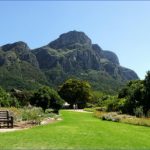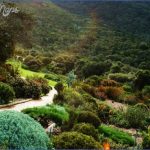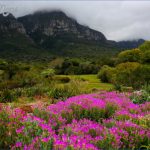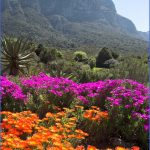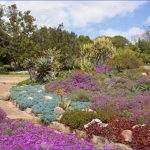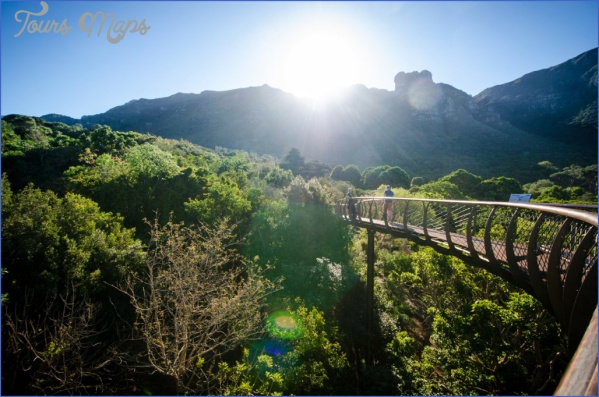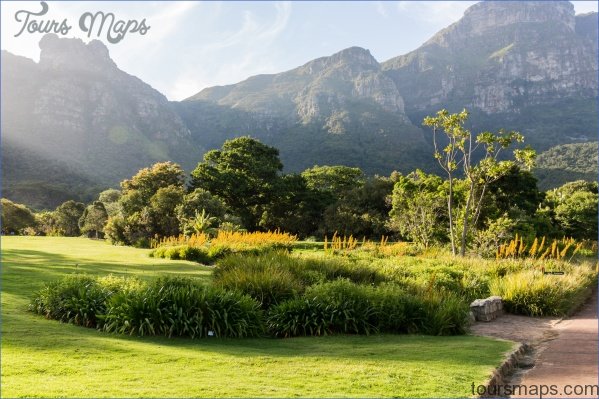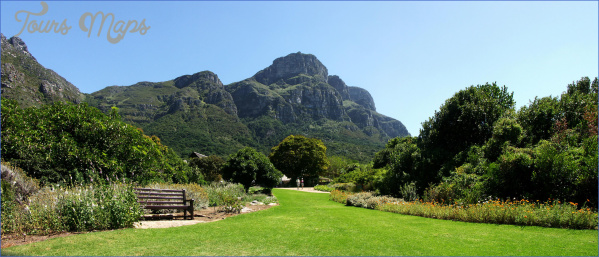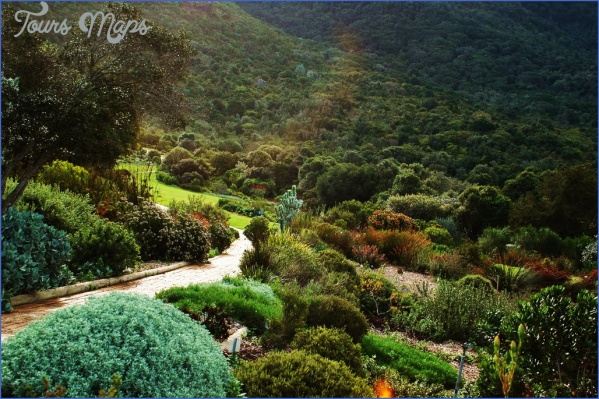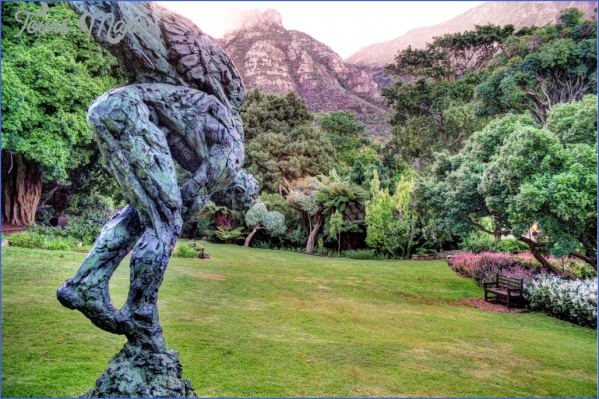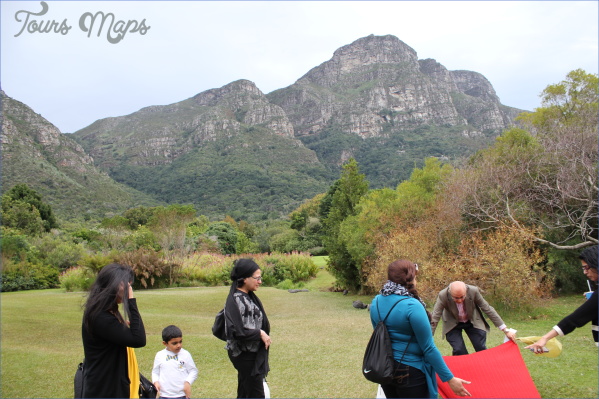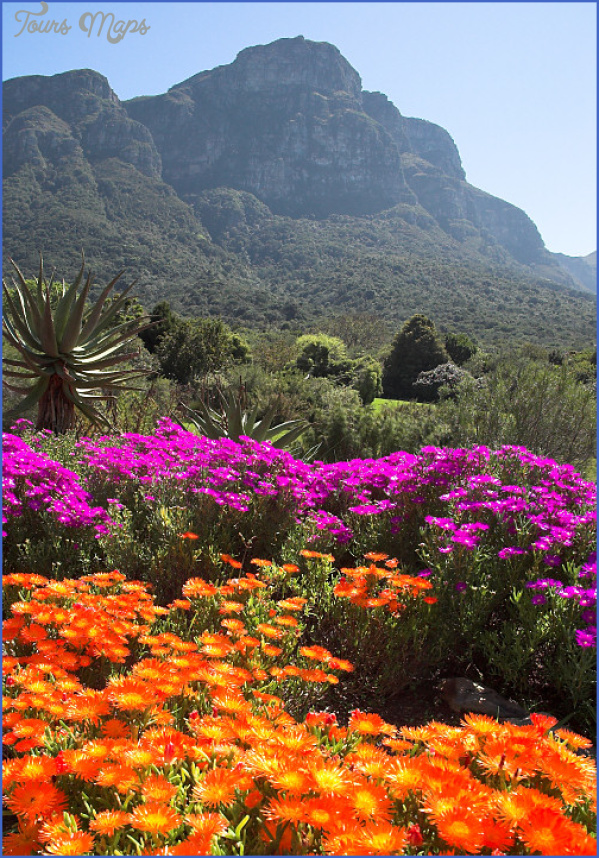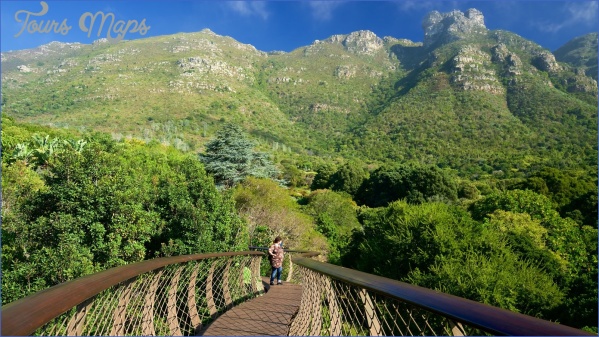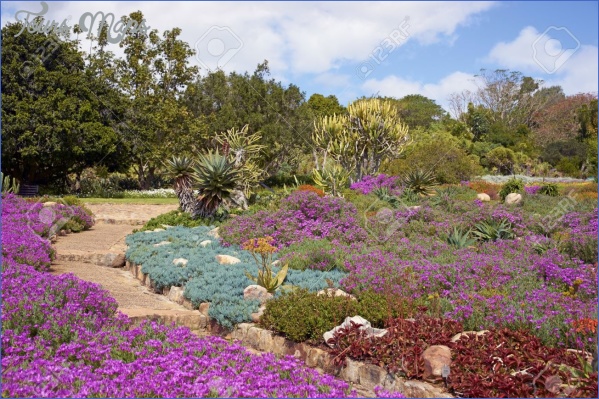The rise of indigenous plant horticulture Kirstenbosch is deservedly famous for its splendid displays ofpincushion proteas such as the yellow Leucospermun reflexum var. luteum (front) and L. cordifolium (behind).
The famously rich South African flora presented an exciting challenge to the Garden’s horticulturists. The talent, patience and skills (and no doubt the Kew training) of many of Kirstenbosch’s horticulturists – Mathews, Thorns, Werner, Winter – changed the face of indigenous plant horticulture in South Africa. Soon after the establishment of Kirstenbosch, plants began to be donated to the Garden from all corners of the country, supported by free rail transport in the early years, providing an almost limitless supply of new and exciting material to test and introduce into the Garden. Mathews built modest greenhouses to propagate the vast collection of cuttings and seeds that were flowing in – over 2 000 accessions arrived in 1915 alone – and the pace did not slow until the 1930s. Under the leadership of Compton, extensive field collecting trips were made, filling gaps in the living collections, and expanding the herbarium.
Trip To Kirstenbosch National Botanical Garden Photo Gallery
A tolerant approach Stone Pines, planted in the 19th century, loom below Castle Rock. In spite of the sensitive Garden design, at the time of its establishment in 1913, years of neglect had resulted in a dense cover of alien species – oaks, pines, poplars, gums and brambles. During the Garden’s early years, acorns provided a necessary source of income (as pig-fodder), and the few surviving old oaks, along with scattered Stone Pines (some planted in the mid-19th century) were retained – and form part of the ‘cultural landscape’ to this day, offering welcome shade. Resistance to the removal of the oaks was passionate, and so a policy of gradually removing old, weak trees has been followed; most have, over the years, been replaced by indigenous species. On the other hand, an energetic campaign to remove all invasive alien species has been very successful. This, together with a policy of fire prevention, has allowed the natural forest and fynbos to re-establish across the mountain slopes and ravines.
Gardens within the Garden Clearing and developing the Erica and Protea gardens was a major project of the 1970s. Given the richness of the Cape Floral Kingdom, emphasis at Kirstenbosch has always been on the fynbos, which is characterised by three families – Proteaceae, Ericaceae and Restionaceae, plus a rich diversity of bulb species. Fynbos, or ‘fine bush’, refers to the finely leafed plants, typified by the many Erica species, but also a characteristic found in many other Cape plant families. Fynbos vegetation is prolific in species, but some are difficult to cultivate, as early attempts at Kirstenbosch were to reveal.
Proteas have a relatively long history of successful cultivation, even though they fall victim to the root fungus Phytophthora cinnamomi, making them prone to sudden death. By 1800, the gardens at Kew had 20 species in cultivation, and the royal gardens in Vienna and Paris were soon to follow.
South Africa has 387 species of Protea, with 220 species in the Kirstenbosch living collections, displayed in an extensive Protea Garden accessed by a 1.2-kilometre walkway. The King Protea Protea cynaroides represents the country in a diversity of emblems – national flower, national cricket team and numerous brands.
Sadly, the once abundant Silver Tree Leucadendron argenteum, which so impressed Burchell and other early visitors to Kirstenbosch, and which is endemic to Table Mountain, has been dramatically reduced in numbers by the root-rot fungus Phytophthora. The spores of this fungus quickly disperse through irrigation water, invading a plant’s vascular system and literally cutting off its water supply. Within days of infection, the leaves of a large Silver Tree turn gold, then brown, before the whole tree dies. The upper lawns of the Garden once carried a woodland of elegant Silver Trees – many up to 10 metres in height – of which only a few now remain.
Maybe You Like Them Too
- Top 10 Islands You Can Buy
- Top 10 Underrated Asian Cities 2023
- Top 10 Reasons Upsizing Will Be a Huge Travel Trend
- Top 10 Scuba Diving Destinations
- World’s 10 Best Places To Visit



